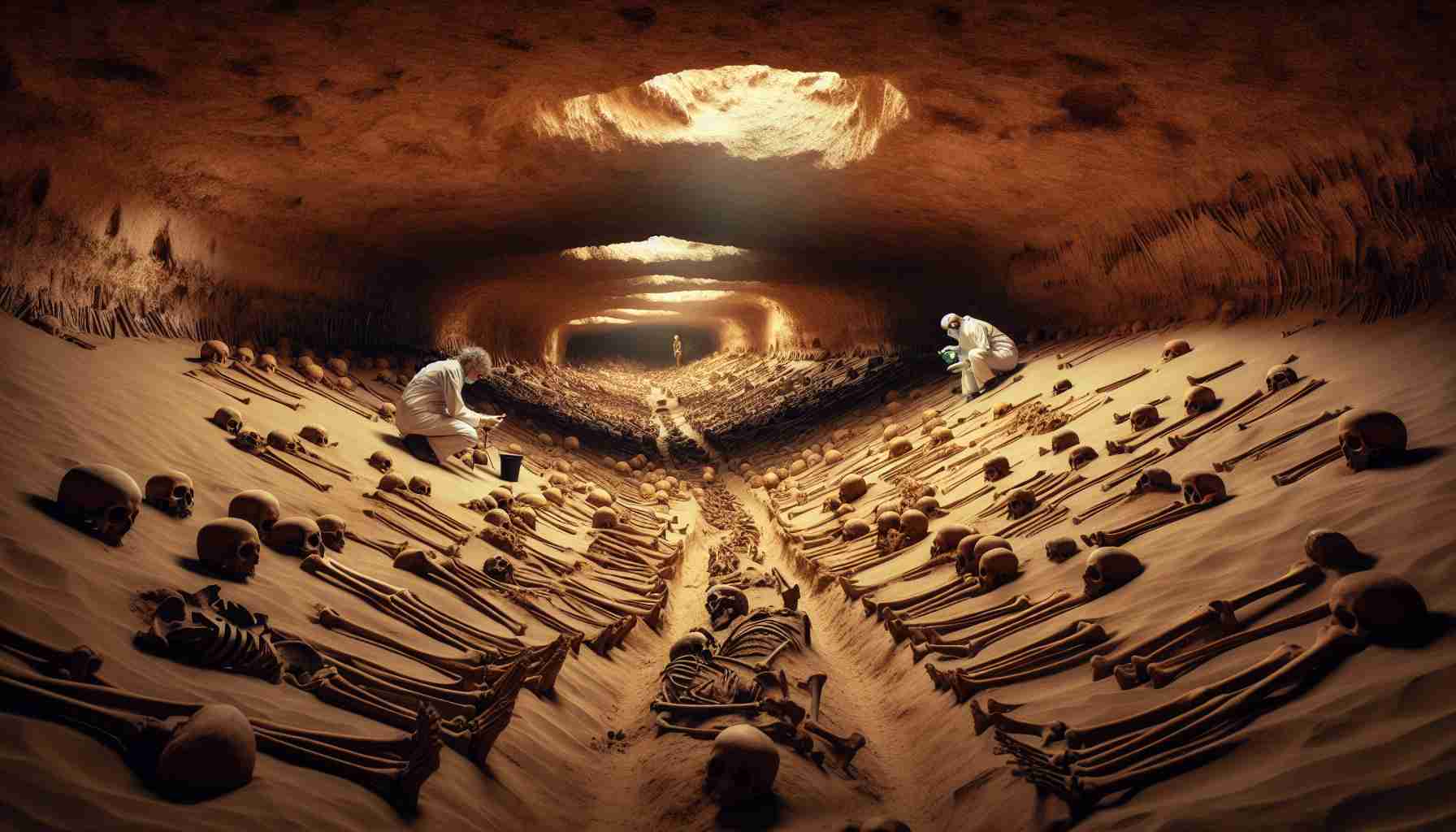Uncovering Dark History with Satellite Technology
Recent analysis of satellite imagery spanning from 2014 to 2022 has revealed disturbing evidence of mass graves in Syria, particularly in the region of Al Qutayfah, located approximately 25 miles from Damascus. A researcher, speaking from the heart of the Syrian capital, noted that at least five significant burial sites have been identified through this innovative approach.
In a series of satellite images, the area appears untouched in 2012; however, by 2014, clear signs of excavation become visible. Subsequent images demonstrate a landscape marred by lines in the sand, suggesting ongoing activity in the area. These markings have been observed to rise and recede over the years, indicating the potential for documented human rights violations.
The researcher expressed confidence that the number of mass graves might exceed the five confirmed sites, suggesting that the grim count could include not only Syrian victims but also individuals from the U.S., the U.K., and other nations. This alarming claim, however, remains unverified as independent checks by news outlets like Reuters have yet to substantiate these findings.
As the conflict in Syria drags on, these revelations raise significant questions about accountability and the broader implications for international human rights within the region. The satellite images thus serve as a crucial reminder of the ongoing search for truth and justice amidst decades of turmoil.
Revealing the Truth: How Satellite Imagery is Changing the Landscape of Human Rights Violations
Uncovering Dark History with Satellite Technology
The use of satellite technology has ushered in a new era for investigating human rights violations, as recent analyses have unveiled evidence of mass graves in Syria. Between 2014 and 2022, researchers observed significant alterations in landscapes through satellite imagery, particularly in Al Qutayfah, a region located about 25 miles from Damascus. The implications of these findings are profound, pointing to a potentially larger issue of accountability in the ongoing conflict.
How It Works: The Technology Behind the Discovery
Satellite imagery allows researchers to monitor changes in land use and detect unusual soil disturbances which may indicate excavation activities. This innovative approach is not only limited to Syria but is also applicable in other conflict zones worldwide. The specific methodology often includes:
– Comparative Analysis: Researchers analyze images from different time periods to identify discrepancies in geographic landscapes.
– Change Detection Algorithms: These algorithms help highlight areas of concern, indicating human intervention that may suggest mass burial sites.
– Crowdsourced Data: In some projects, volunteers also analyze satellite images, enhancing the ability to uncover hidden truths.
Pros and Cons of Utilizing Satellite Technology for Human Rights Investigations
Pros:
– Increased Access: Remote monitoring allows for the observation of regions that are otherwise inaccessible due to conflict.
– Documentation of Evidence: Satellite images serve as documented proof of potential human rights violations, crucial for future investigations and legal proceedings.
– Global Awareness: Enhanced visibility can lead to increased international pressure to act against violators.
Cons:
– Verification Challenges: While satellite imagery can indicate potential violations, it does not offer conclusive proof without ground verification.
– Privacy Concerns: The use of such technology raises ethical questions regarding surveillance and the potential for misuse.
Limitations and Challenges
The method, while innovative, is not without its limitations. Verification of findings remains a significant hurdle. As noted, independent corroborations by media outlets like Reuters are crucial for substantiating any claims made based on satellite images. Furthermore, the ongoing conflict complicates direct access to these sites, hindering comprehensive investigations.
The Future of Satellite Technology in Human Rights Advocacy
As conflicts like the Syrian war continue to unfold, the role of technology in uncovering truths becomes ever more critical. Experts predict that with advancements in imaging capabilities and artificial intelligence, the accuracy of identifying human rights violations will improve dramatically.
– Predictive Analytics: Future satellite technologies may include predictive analytics to forecast areas at risk of such violations before they occur.
– Integration with Ground Reports: Combining satellite imagery with on-the-ground reports from NGOs and human rights organizations can enhance verification processes.
Security and Ethical Considerations
The application of satellite technology in sensitive regions raises vital security questions. Ensuring that this technology is used ethically and does not infringe on the rights of individuals is paramount. Striking a balance between advocacy for human rights and respecting privacy will remain a topic of ongoing discussion.
In conclusion, the revelations made possible by satellite imagery in Syria are just the tip of the iceberg for both human rights advocacy and technological potential. As the global community continues to seek justice, technological innovations present both opportunities and challenges that will shape the future of humanitarian efforts.
For more insights into technology and human rights, visit Amnesty International.



















